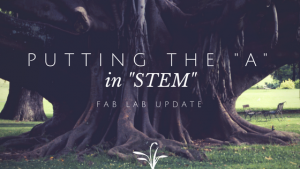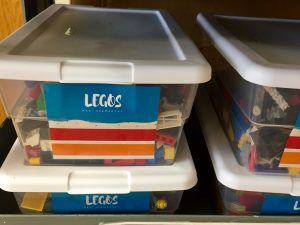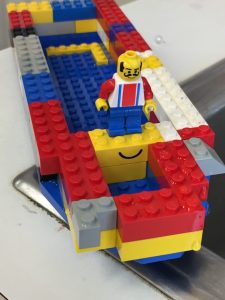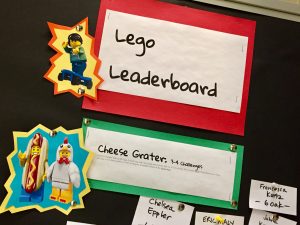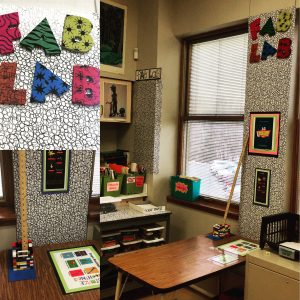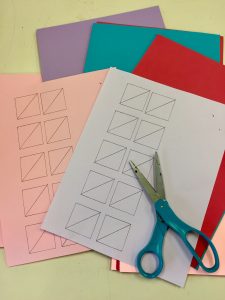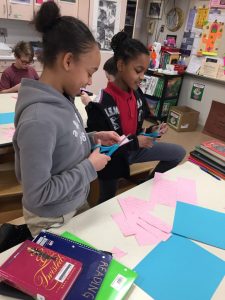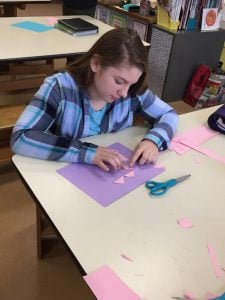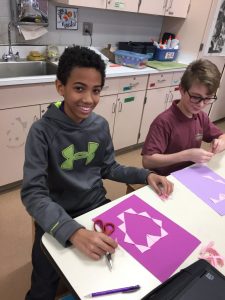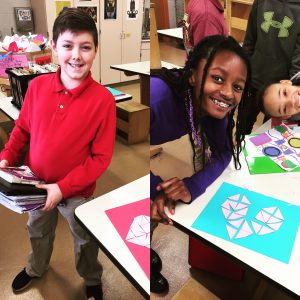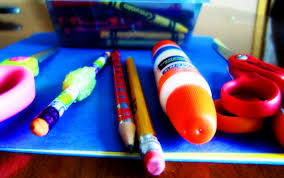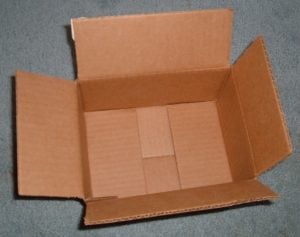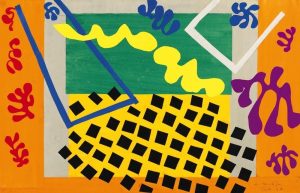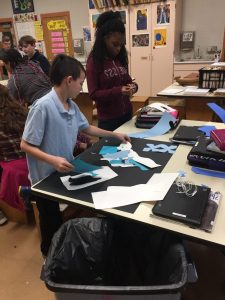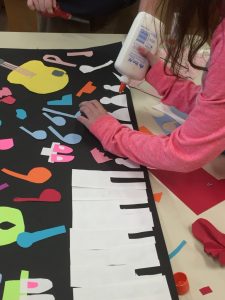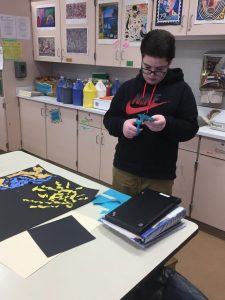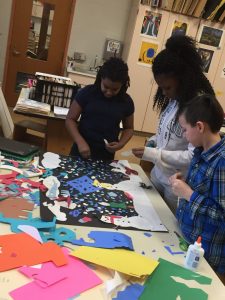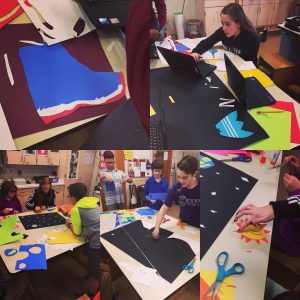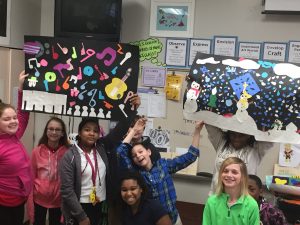In a previous post, I introduced my latest STEAM endeavor, “The Fab Lab”. Treating it as a seed that will grow throughout the school year, I was eager to share the development of this “makerspace” for students over the course of the school year in my blog. Here are some of my goals and observations (and a few reality checks) from our classroom experiences with the “Fab Lab” since December…
GOAL #1: ORGANIZATION…or controlling the chaos!
I rallied my students during the month of November to help sort and organize the enormous amount of legos that my smART partner and I accumulated last school year. After putting out an email request to teachers and staff, we were fortunate enough to have bins and boxes of old legos donated to the art room. However, this also meant that there were miscellaneous toys, matchbox cars, dinosaurs, shooting cannons, figurines and dinosaurs mixed in. While the kids loved finding all of the “retro” discards, I knew we needed a system to help guide the students towards constructing and learning through play. It’s amazing how side-tracked a 6th grader becomes when he or she finds an old toy from someone’s past!
We decided to organize the legos into categories. We separated legos into bricks and blocks, flat pieces, doors and windows, axles and wheels and bridge pieces. I provided several bins and ziploc bags to sort the legos that did not fit into those categories, which meant we had bags of lego figures, lego dinosaurs, etc. The kids and I did a pretty good job of getting through a couple of storage bins and I felt good about the system we had in place. I figured students could look for the designated bin to find specific pieces they needed based on the challenge.
REALITY CHECK…
So, it’s been a couple of months of legos in the Fab Lab and the legos are no longer organized at all. They are all mixed together, but the kids don’t seem to mind. I learned to let go of my lofty goal of “organized bins” to help students find specific pieces and just let the students search for pieces amongst what is there. I think having all sorts of legos together in a bin allows for more creative exploration during their building challenges. The students are building and testing their creations through trial and error and I think that is furthering their exploration through play. I also find that they are willing to collaborate when they are forced to “share” a bin. Thus, I have now purchased classroom sets of bins with lids that house legos for each individual table. Students share. There is less bickering over legos and the groups that sit together are usually pretty good at sharing with one another.
GOAL #2: ROTATING THE MATERIALS EVERY MONTH
Our initial goal of the Fab Lab was to offer students a chance to complete themed challenges using different materials each month. Since our students still have traditional art projects to complete during instructional time, the Fab Lab serves as a space where students can go when they finish a project early. This means that some students who work at a fast pace get to spend a lot of time in the Fab Lab and others don’t. I wanted to make sure that students had an opportunity to work with the materials long enough to accomplish the building challenge, while also learning how to best use these materials based on what the goal was. I quickly learned that a month was not sufficient.
REALITY CHECK…
After reflection and conversation with students, I realized that one material per month was not going to be enough time for students to participate in the challenges. My smART partner and I concluded that the materials should stay out for an entire marking period before switching out to a new theme. The students were happy with this arrangement because they could spend more time building and collaborating towards their goals. PS. The legos have been out a bit longer due to interruptions to our schedule and the students wanting more time!
In addition, I learned that not every challenge could be started and completed in the short amount of time a student may be in the Fab Lab. A student would spend time building and testing a constructed piece, only to have to deconstruct it at the end of the period. I have now created a small storage space on a cart in my room where students can leave their “constructions in progress” so they can continue to work on them during their next time in the Fab Lab. By allowing students to store their pieces, I have also found students are able to truly test and revaluate their creations in a more constructive way.
GOAL #3: THE LEADERBOARD!
Everyone knows a challenge is more fun when there is some healthy competition! My smART partner and I created a “Leaderboard” with different categories based on the number of challenges completed. Students track their completed challenges on a “Bingo-style” board. The teacher signs off on the challenge as the student demonstrates completion. It is the student’s responsibility to keep their “Challenge Card” as evidence of their status. Students get their names on the leaderboard once they have completed a certain number of challenges and then can move to a new level.
REALITY CHECK…
While the leaderboard is still up and running, the students take awhile to move between levels due to the ambitious nature of the challenges. I think that for our next rotation, we may have to reduce the number of challenges to be completed so students can advance a bit quicker. However, I do have one student who is diligently working her way through the challenges, even coming to the art room during my prep periods! She is up to challenge 10 out of 12!
LEARNING THROUGH PLAY IS VALUABLE…
Another important aspect of the Fab Lab is that students really are learning through play. It is so fun to watch students enjoy a break from studio time and just be kids! As they sort through the legos, get excited to test out one of their creations and conquer a challenge, I get to witness their enormous pride. I love watching students collaborate to reach a goal. Students test their engineering skills through unconventional drops, running water, adding shoes and marbles to their creations to test its strength…the novelty hasn’t worn off. I like that the challenges have multiple solutions and there is not a “right or wrong way”. The seed has been planted in my students and their natural curiosity and self-discovery in the Fab Lab keeps the momentum going.
STILL NOT GIVING UP…
As any good teacher knows, your first attempt at something isn’t always going to go as planned. It takes time and reflection to truly evaluate the success of a new initiative. I am still really excited about my Fab Lab and all of the exciting things we can do with this space. I am still taking as many professional development opportunities that I can to further my knowledge about STEAM and the makerspace movement. I continue to re-work the organization of the space, seek out new materials and challenges to do with students and get valuable feedback along the way. I look forward to helping my students grow through their creative experiences in the Fab Lab throughout the rest of the school year and into the future!
-Mrs. S

